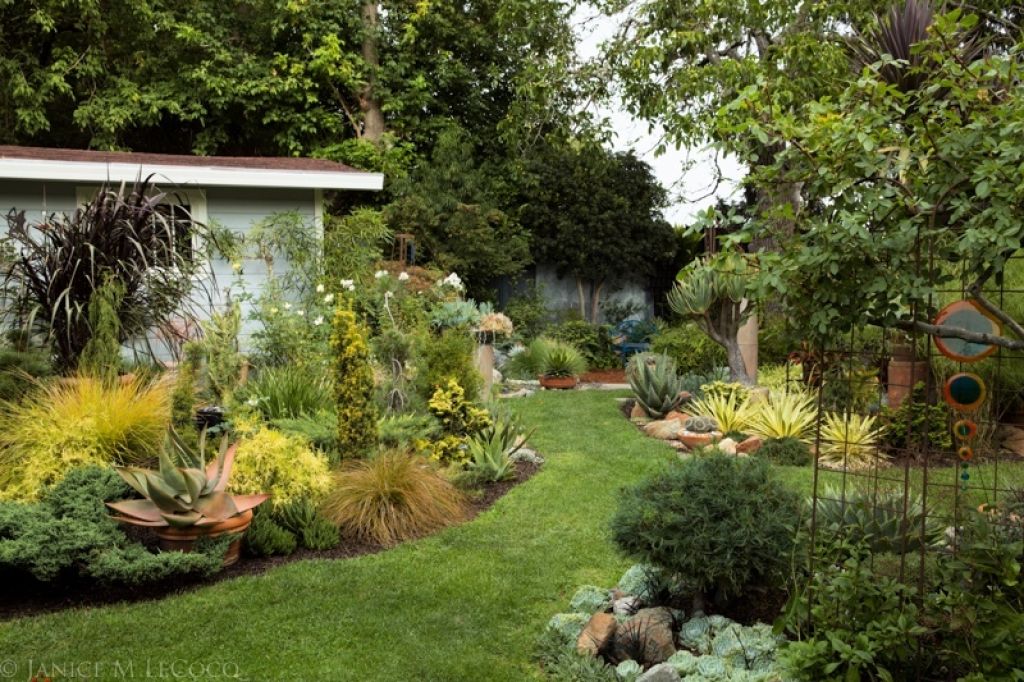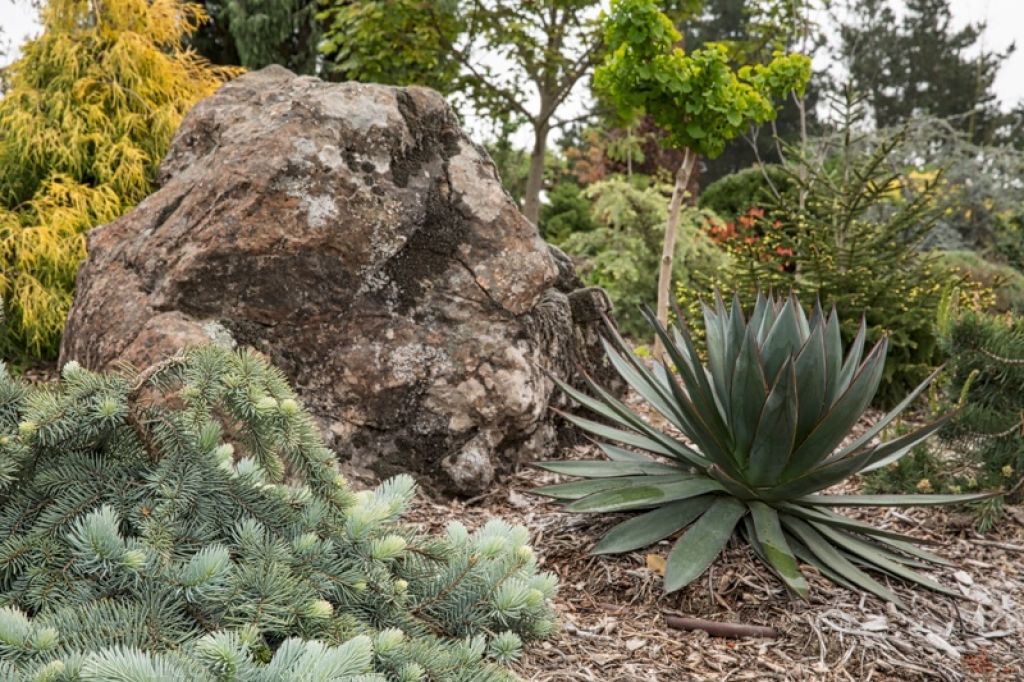

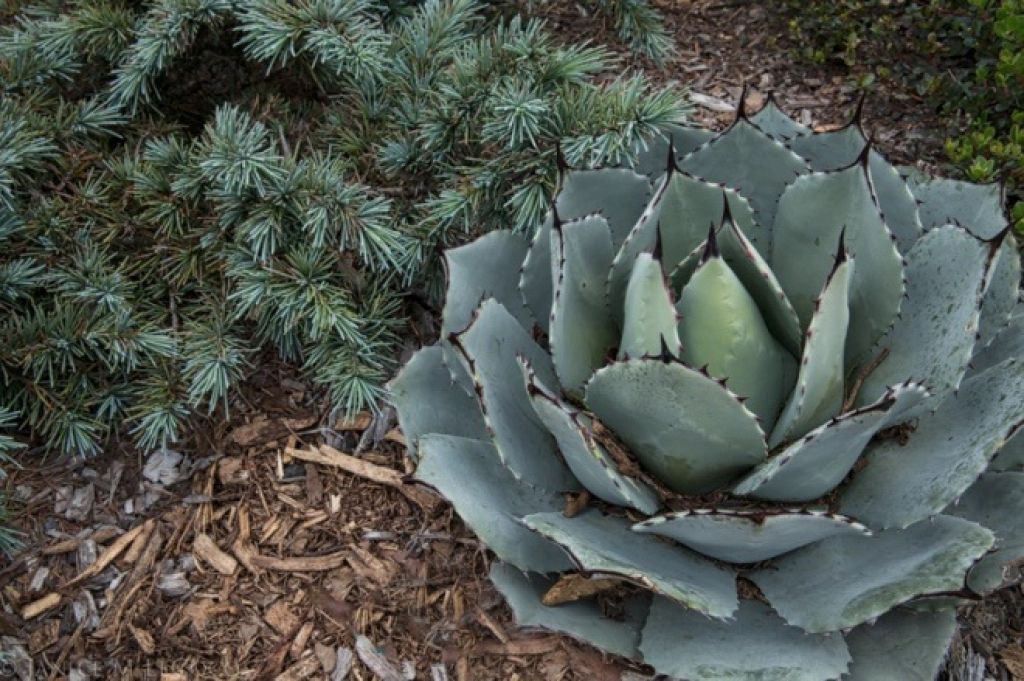
Foliage gardeners continually must grapple with the fact that most of the interesting foliage plants have small leaves. From the conifers' needles to shrubs such as Abelia, Berberis and Hebe it is difficult to get away from fine textures. Most of the large-leaved shrubs, such as Rhododendron and Pieris, are denizens of the woodland garden and not happy in sunny gardens without acid soils. Many succulents provide large scale leaves that beautifully contrast with finer foliage.
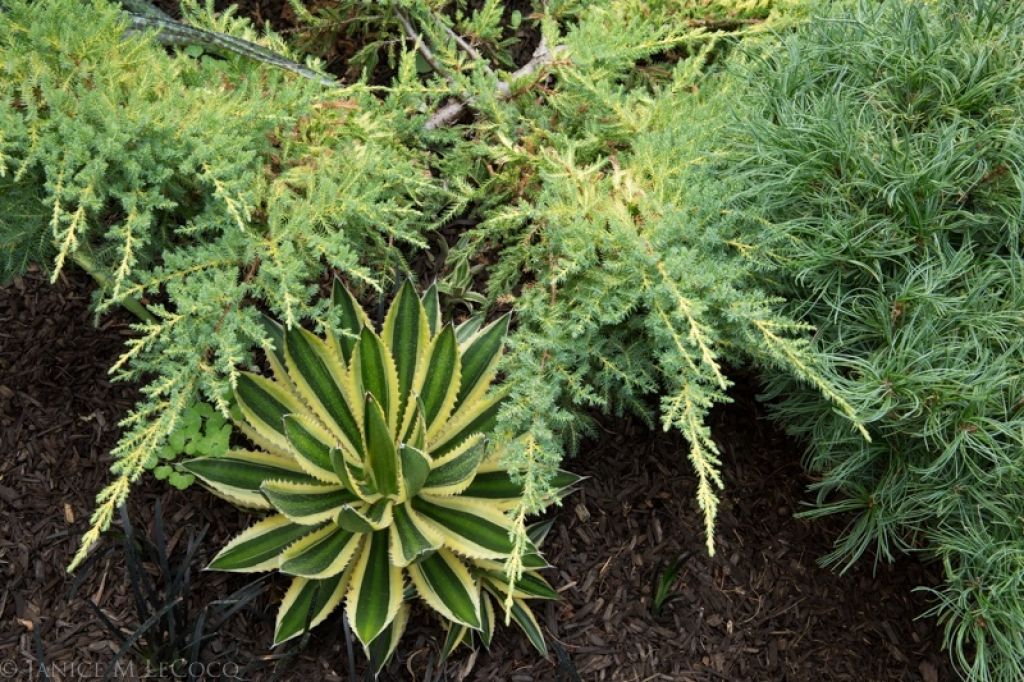
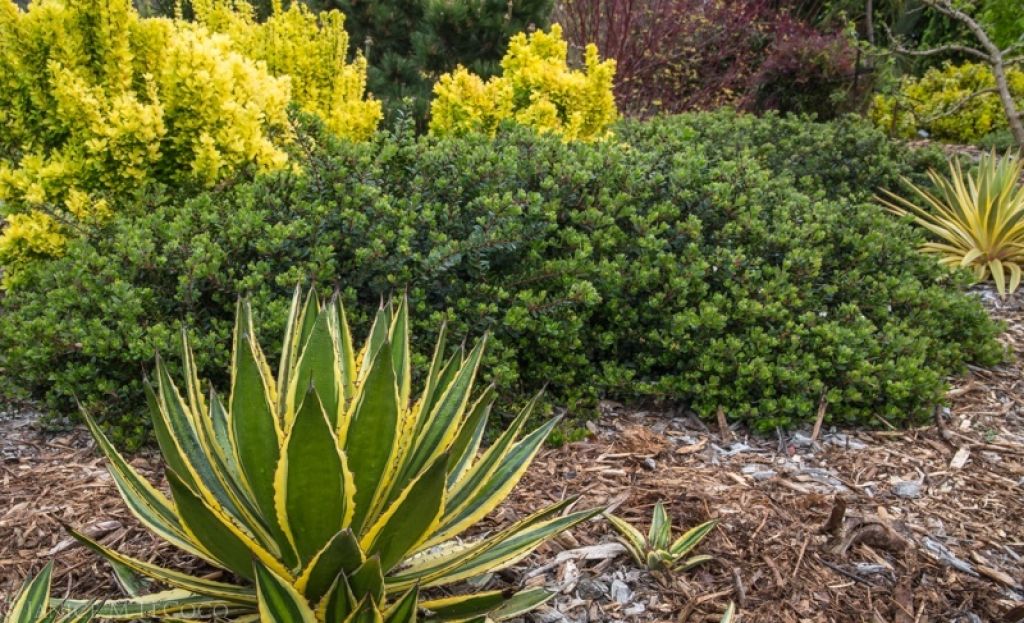
The idea of interplanting succulents with conifers and other foliage plants strikes some as odd if not downright unnatural. To get a taste of how Nature herself does it, visit a forest in Mexico and see Yucca and Agave growing side by side with pines and cypress. We think of Mexico as a succulent haven when in fact Mexico also has more native pine species than any other country. Many of our perceived design rules are products of our own traditions and not necessarily representative of what is possible or, indeed, even plentiful in Nature.
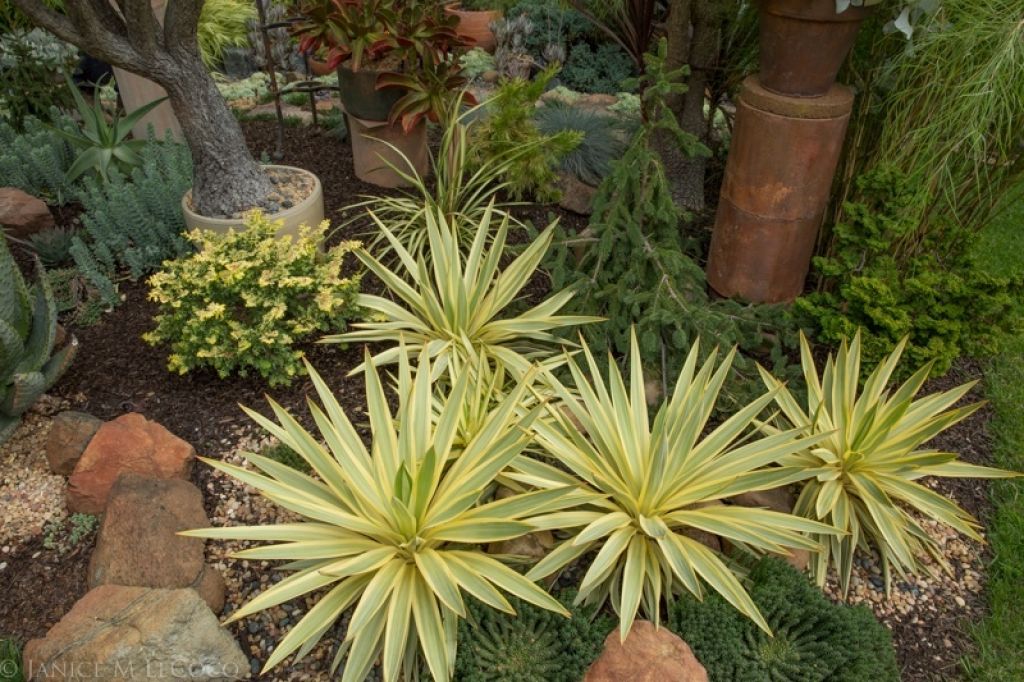
Succulents come in a vast array of colors although most of the genera with larger species (Yucca, Agave, Aloe, etc) have the most selections in shades of green, blue and yellow. It is not uncommon to find multiple colors with either stripes, such as many Yucca and Agave, or marginal accents in contrasting shades.
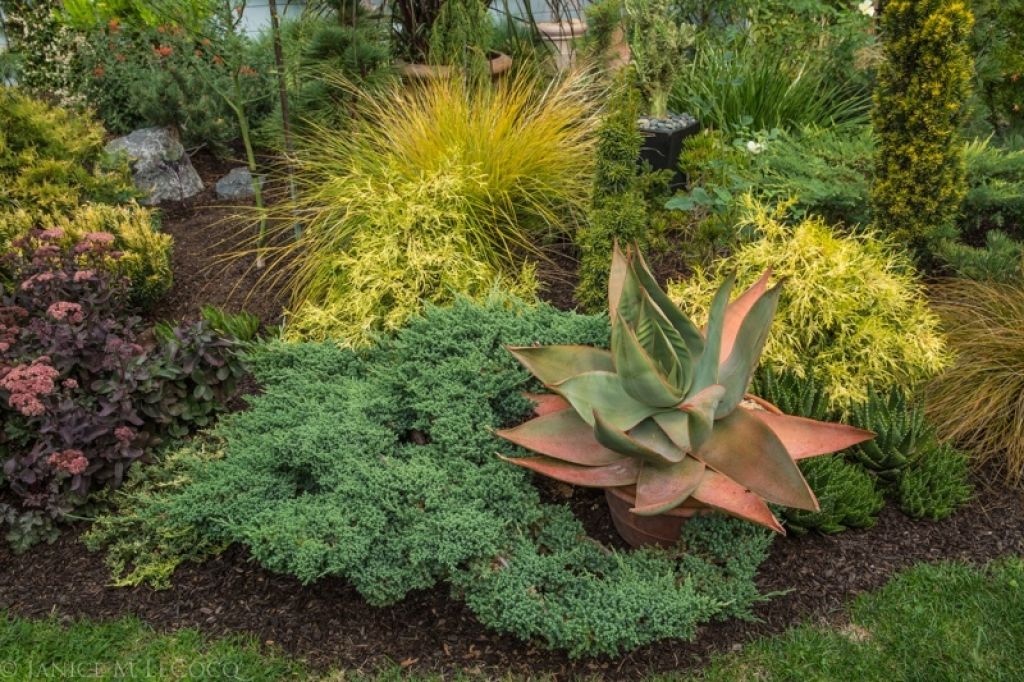
Aloe striata has coral leaf margins and in shade, rosettes of broad, flat, bluish-green leaves. The leaves turn ruddy pink in full sun and make for a beautifully two-toned plant. In the photo above, the blue-green of the Aloe is echoed by the juniper, again with a marvelous textural contrast. The Aloe is hardy to only 20 degrees, so in this garden is planted in a container, which may be moved to a protected area when necessary.
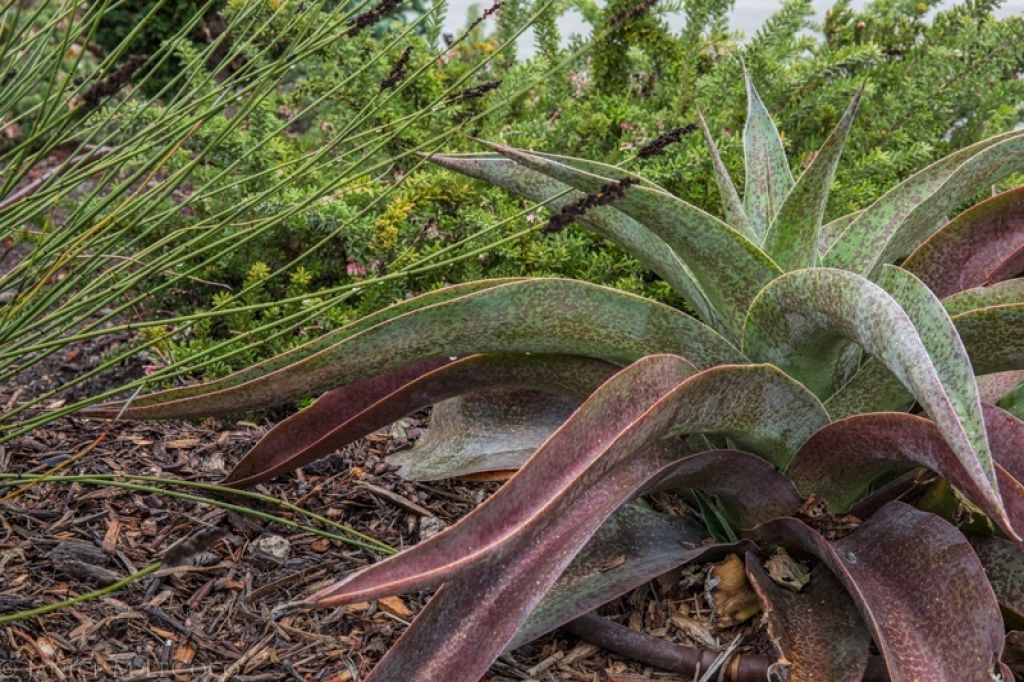
There are larger succulents with maroon foliage. Some of our favorites are the Mangaves, thought to be crosses between Agave and Manfreda. 'Macho Mocha' is a stunner; it reaches 4-6' across at maturity and its broad, strappy leaves are liberally peppered with deep, bronzy red.
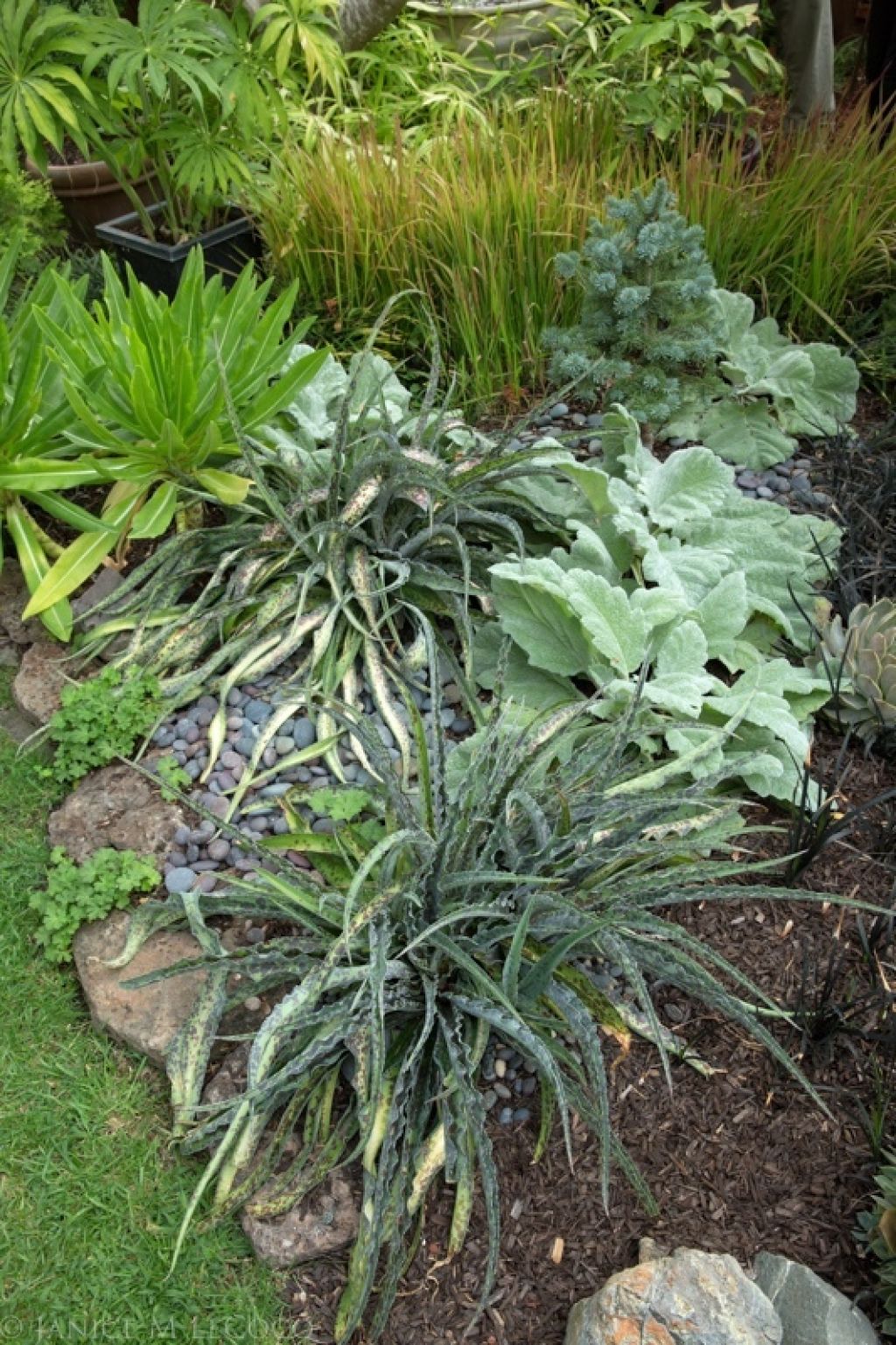
There are several Mangave cultivars, ranging in size from the large 'Macho Mocha' to 'Blood Spot', which makes a compact rosette about a foot across. Most Mangave appear to be hardy to between 0-10 degrees, which make them, along with some Agave, among the most cold-tolerant succulents.
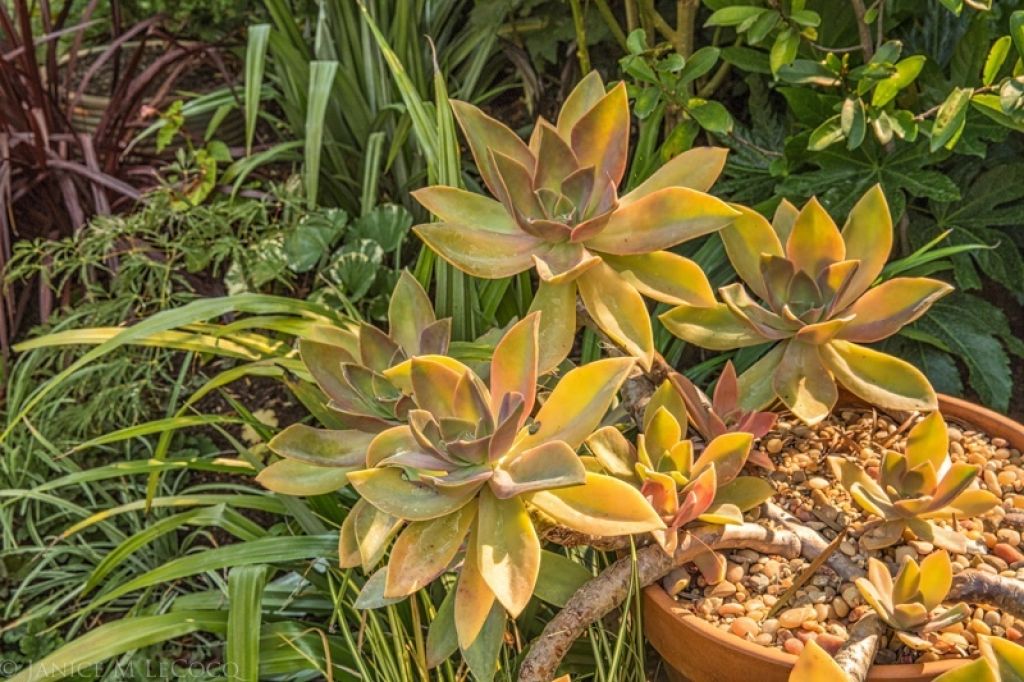
Secondly, many conifers and woody plants can do with less, or at least less frequent, water than many perennials. The fussiest succulents--those that are frost-tender or require extremely well-drained soil--can be planted in containers which both allow for removal to shelter during winter and provide excellent drainage. However, it is perfectly possible to grow succulents near other plants simply by creating a mound made up of 1/2 soil and 1/2 a gritty substance such as lava pebbles. If the succulent is planted high up in such a mixture, it can receive the same amount and frequency of water as the other plants, and it will drain much more quickly.
Most succulents do not like to be cold and wet at the same time, a challenge for those in Mediterranean climates. Mounding with pebbles or judicious use of containers generally works to provide enough drainage for all but the fussiest plants. Planting next to a hardscape that warms quickly in winter sun can also create a more friendly microclimate.
